Greenback cutthroat trout, the state fish of Colorado that was once thought to be extinct, are now spawning in their native watershed, Gov. Jared Polis announced on Friday.
The state of Colorado has had “on-again, off-again” success trying to restore greenback cutthroat trout to their native range within the South Platte River watershed. A genetically pure population of the fish was found in Bear Creek on the shoulders of Pikes Peak in 2012 in the Arkansas River drainage — the fish were likely planted there more than a century ago by a mountain lodge owner to create a recreational fishery for visitors. Before that, other relict populations were located, and stocking efforts were underway as early as the early 2000s. Unfortunately, the brood stock for those earlier efforts turned out to be genetically tainted with Colorado River cutthroat trout ancestry.
But last week, Colorado Parks and Wildlife announced that the first-ever documented spawning of greenbacks from the genetically pure Bear Creek lineage has occurred in Herman Gulch west of Denver.
"While we will continue to stock greenback trout from our hatcheries, the fact that they are now successfully reproducing in the wild is exciting for the future of this species,” Polis said on Friday. “This is a huge wildlife conservation success story and a testament to the world-class wildlife agency Coloradans have in Colorado Parks and Wildlife. Colorado's ecological diversity strengthens our community, supports our anglers, and our thriving outdoor recreation economy. CPW's staff and our partner agencies have worked for more than a decade to restore this beloved state fish, and today's news truly highlights the success of the work.”
Greenbacks were declared extinct from Colorado in the mid-1900s, victims of mining, road building, logging and general human development. But biologists and fisheries professionals never gave up hope. After the initial successes and failures with the tainted broodstock initially released in waters within the South Platte and Arkansas drainages, the discovery of a new generation of greenbacks spawned in the wild marks a major milestone in the recovery of the fish.

To this day, a three-mile stretch of Bear Creek remains the last true stronghold for these fish, and it is the source of broodstock for Colorado Parks and Wildlife recovery efforts. Every year, biologists catch fertile trout in Bear Creek, collect eggs and milt, and then raise greenbacks in the Leadville National Fish Hatchery. In 2014, CPW established a second brood stock in Zimmerman Lake, near the headwaters of the Cache la Poudre River, and within fish’s native range. Together, the two sources are used to grow fish and then stock them in waters within their native range where CPW believes the fish can reproduce and succeed.
"The bedrock mission of Colorado Parks and Wildlife is to perpetuate the wildlife resources of the state," said CPW Acting Director Heather Dugan in a news release. "Despite more than a decade of setbacks and frustrations, CPW staff worked as a team across departments and across regions, stayed focused on the goal and now we gave this great news. It's a great day."
Greenbacks were first stocked in Herman Gulch in 2016. A tributary of Clear Creek, which runs the course of I-70 between Georgetown and Golden, Herman Gulch starts on the shoulders of the Continental Divide and is only accessible by foot. Three other streams within the South Platte drainage have been stocked with greenbacks, as well, but only the Herman Gulch population has been in the wild long enough to mature and spawn.
It may seem like no small feat — taking pure cutthroat trout from one stream and putting them in another — but the restoration effort has been fraught with peril from the beginning. Biologists have had to deal with wildfires, flash floods and reports in 2020 that the Bear Creek population of greenbacks was on the decline, and that no natural reproduction occurred that year. CPW immediately sprang into action to improve habitat in the brood stream. Additionally, threats continually exist from non-native trout, like rainbow, brown and brook trout that could conceivably move into greenback habitat and outcompete the native fish.
After all the adversity, it was a relief for biologists and technicians to find greenback cutthroat fry in Herman Gulch this summer.

“Our team of field technicians literally high-fived right there in the stream when we captured that first fry that was spawned this year,” said Boyd Wright, a CPW aquatic biologist based in Ft. Collins. “When moments later we captured a one-year-old fish produced in 2021, we were truly beside ourselves. After many years of hard work and dedication, it is extremely satisfying to see our efforts paying off.”
In all, the fish shocked up in Herman Gulch ranged from young-of-the-year fry to cutthroats up to a foot long — likely fish from the initial Bear Creek planing. Year-old fish were also found, indicating that, at the very least, greenback cutthroat trout have been spawning in Herman Gulch since 2021.
“This is important because trout that survive to one year are likely to live even longer,” said Harry Crockett, native aquatic species coordinator and chair of the state’s Greenback Recovery Team.






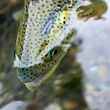




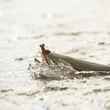
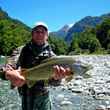



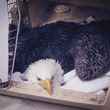
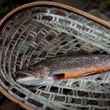



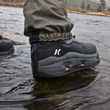
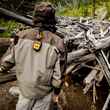



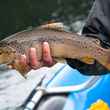
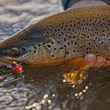



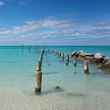

Comments
Jerrold McKaughan replied on Permalink
This is amazing thanks for the story
Carl C. replied on Permalink
FYI, the Governor of Colorado’s name is Jared Polis, not Jared Solis.
Pages